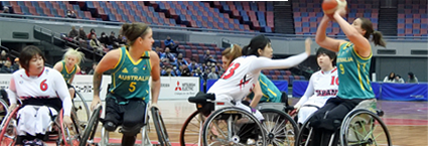Japan’s striking ambivalence toward corporal punishment By: Aaron L. Miller, PhD
(日本語訳は、NOBORDER-SPORTSに掲載されています)
Tragedy struck again in January this year as yet another Japanese teen took his own life. This time the young boy, a second-year high school student in Osaka, committed suicide after his basketball coach repeatedly beat him. According to news reports, the coach admitted to authorities that he had guided his pupil strictly because he was the team captain.
Immediately, the case reminded me of Takeuchi Emi, a promising track and field star who ended her own life after similar punishments in the early 1980s, and Tokitaizan, the young sumo wrestler whose life was taken from him in 2007 after his sempai beat him with beer bottles and baseball bats.
Tragedies like this happen all over the world, but in Japan they are part of a sports culture that encourages if not outright reveres strict training regimens.
Over the many years that I have studied, researched, and taught about corporal punishment in Japan, I have noticed a similar pattern emerge, especially in terms of these most fatal incidents. The coach inflicting the corporal punishment, or taibatsu, always believes that his ‘victim’ is actually not a victim at all, but rather an especially “chosen pupil” who must be trained strictly to maximize his potential. The coach always expects that the young athlete will accept his punishment without a word of complaint, too, in order to set an example for his teammates of steadfast perseverance in the face of hardship, absolute obedience to authority, and constant loyalty to the team.
When the “chosen pupil” complies, and accepts his punishment for his sake and for the sake of the group, he learns a powerful lesson of “team before individual” that he will likely carry with him throughout his adult life.
When he does not, though, the results can be disastrous, as was the case this week.
Remarkably, a Japanese sports coach has a six in ten chance of avoiding punishment himself, even if he admits to Japan’s Ministry of Education, Culture, Sports, Science, and Technology (MEXT) to having beaten, injured, or killed an athlete. Could it be that the Japanese government is willing to sacrifice a few of these teens so that the unwritten educational philosophy lurking behind corporal punishment - strict guidance for the sake of social order - can continue to flourish?
Even Totsuka Hiroshi, perhaps Japan’s most infamous perpetrator and advocate of corporal punishment, spent only a few years in prison for his role in the deaths of several young students attending his yacht school in the late 1970s and early 1980s. Upon his release from prison, in 2006, he famously told the media, with an unmistakable air of defiance: “Corporal punishment is education”. It seems that his philosophy is alive and well today, too: the Totsuka Yacht School is up and running again.
Sadly, the sacrifices continue as well: there was yet another death on Totsuka’s watch in 2009, this time another teen suicide.
Few Japanese and even fewer foreigners realize that corporal punishment has been illegal in Japanese educational settings since the end of World War II, or that there were laws enacted against its use as early as the Meiji Period. Japan was actually the 6th nation in the world to ban corporal punishment, in 1879. Although the prohibition has been vigorously debated ever since, since World War II Japan’s official policy has been that corporal punishment has no place in Japanese schools.
Yet these cases continue, because MEXT does little about educators who insist that this is the best way to guide Japan’s youth.
Only time will tell what will happen to the coach in this case, but if history is any guide he stands a fairly good chance of evading punishment himself.
What we can say at this time, though, with some certainty, is that in her modern period Japan has developed a rather striking ambivalence toward corporal punishment. This ambivalence is what the education scholar Imazu Koujiro calls the tatemae and honne of taibatsu. In other words, the Japanese government may have a law on its books against its use, but every teacher in Japan knows that corporal punishment is a necessary evil they may have to use sometime.
Can corporal punishment be an absolutely necessary tool for effective educational discipline one day, and an dangerous technique of “strict guidance” that leads to truly tragic heartbreak the next?
Perhaps it can, but when we think of young victims like the boy from Osaka, it only seems like the latter.
(Photo : PHOTO KISHIMOTO)







